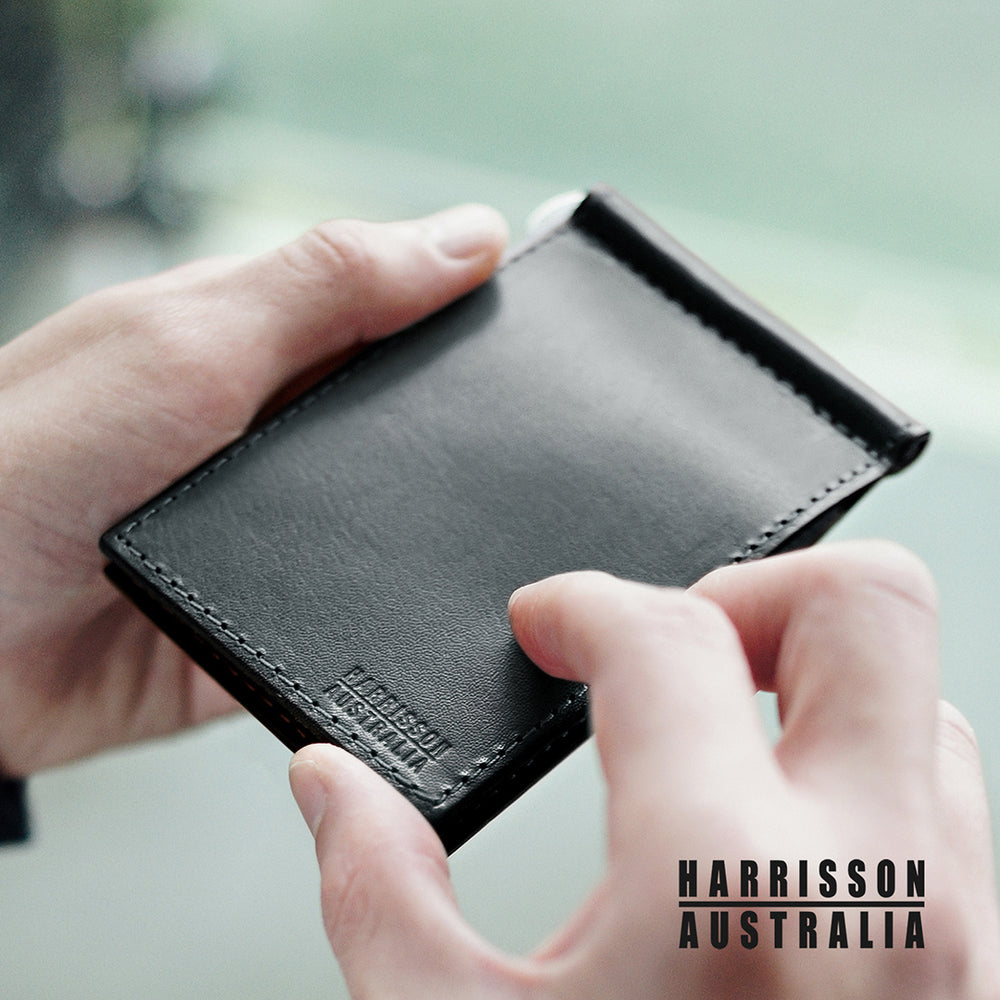Straight From The Studio: How To Make A Leather Belt

Harrison Australia is fortunate enough to have customers from every corner of the globe, with each of regularly asking the same question - how are our leather products made to feel this soft and last so long? Now in our second generation of leather making, we’ve perfected our craft and taken care in selecting only premium materials worthy of our customers. Today, we are going to walk you through the steps to make a leather belt.
Step 1: Double But Cowhide
When making a belt, the preferred cut of leather is a double but cowhide. Harrison Australia has sourced the best cowhide leather on the market, balancing the soft touch and durable qualities. We will start the process by laying the double but cowhide leather flat on the workbench.

Step 2. Cut The Cowhide In Half (Single But)
With the leather laid flat, we will then cut the cowhide in half to more manageable working sizes. The next steps are quite involved and will not be possible to execute if they are too long and wide. Each of our few leather craftsmen has a deep respect for the leathers we use, and believable that almost all materials can be put to work to reduce wastage of this fine resource.

Step 3: Time To Use The Leather Plough Gauge Strap Cutter
Now that we have the leather we are working with, we can start to introduce some of the tools to the job. The leather plough gauge strap cutter is exactly what it sounds like. We attach this tool to the edge of the leather and begin to cut the strap in our desired width. As you would know, our Harrison Australia belts come in a number of widths - 20mm, 30mm, 32mm and 40mm. It’s critical that the cut edge of the belt is straight because the leather plough gauge strap cutter is going to cut in parallel with that edge.

Step 4: Time To Position The Strap End Chisel
Once we have our long strap that has been cut to the right size you are after (size 28, 30 etc), we can focus on the end and make sure it is a nicely manicured finish. You want to spend some time here in perfectly positioning this end and you can move the chisel until you have the ideal symmetrical position.

Step 5: Cut The Strap Using The Strap End Chisel
When you are happy with your chosen position, you apply some pressure here so that the chisel cuts through the leather and leaves you with a cut edge. The pointed end is where holes will be placed in the belt strap for the buckle tongue. The rounded end is where the belt will attach to the buckle.

Step 6: Feed The Strap End Into The Leather Splitter
Hopefully, you haven’t fallen in love with the thickness of the belt too much, because we are about to thin the buckle-end of the leather so that it folds easily around the metal buckle. Ultimately, the thinning only serves to benefit the look of the leather belt. The belt will feed into contraption that looks like a pasta maker, and you only want to insert only about 5 cm into the leather splitter.
Step 7: Split The Leather For A Belt Buckle
With the leather inserted into the leather splitter, we slowly begin to pull the leather out of the splitter so that the splitter can do its job. You will then be left with a belt end that has had its bottom layer completely halved and removed. Now you have an end that has been split and ready to receive a buckle. Now we can leave this end for now, and start to work on the belt edges.

Step 8: Edge Bevel The Sides
This is probably one of the most therapeutic steps of making a belt, and while it can take a while it’s incredibly satisfying. Using some sharp specialist tools, we take our time in edge bevelling the edges of the belt so that they are rounded and not square and sharp.

Step 9: Apply The Edge Dressing To The Sides
It’s this step here that makes us lucky that each member of our Harrisson Australia team are the perfectionists that they are. We will now take out time in carefully dressing the leather edge of the belt, using a dressing that is the same colour as the top and bottom of the leather. It’s critical that this dressing doesn’t find its way onto the leather as it will discolour and be noticeable to the eye and touch.

Step 10: Hot Foil Logo Stamping
After the edge dressing has dried on the belts, it’s time to mark this beauty with our Harrisson Australia logo. This machine has our logo attached and when the belt is safely fed through the machine, the logo will be stamped inside the belt. Hot foil stamping is a nice way of marking our belts.

Step 11: Attaching Belt Buckles
Heading back to the split end of the belt, it’s time that we add our belt buckle. We source only stainless steel and crome plated belt buckles, so your belts last the distance. We’re so confident in our selection that we offer a generous five-year warranty on all our products. When we split the end, we also punched two holes through the belt strap, and rivets are going to go here to hold our belt buckles in place. Once they are safely affixed, we do our rigorous quality assurance testing so that they are working exactly as they should.

Step 12: Your Belt Is Ready To Be Boxed And Shipped
And just like that, one of our belts moves off the production line and into one of our gorgeous boutique boxes, ready to be posted right to your door. It’s taken us many years to perfect and optimise these complex 12 steps, and every consideration has been explored so that we can continue to create great belts that are loved by our customers as much as they are.



